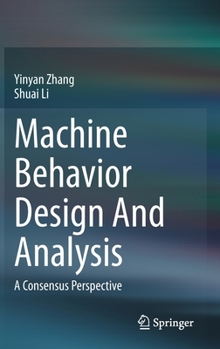Machine Behavior Design And Analysis: A Consensus Perspective
Select Format
Select Condition 
Book Overview
1 Introduction to Collective Machine Behavior
1.1 Collective Machine Behavior
1.2 Consensus1.3 Theoretical Tools
1.4 Chapter Summary
References2 Second-Order Min-Consensus
2.1 Introduction
2.2 Preliminary and Problem Formulation
2.3 Min-Consensus Under Switching Topology
2.4 Simulation Example
2.5 Chapter Summary
References
3 Consensus of High-Order Discrete-TimeMulti-Agent Systems
3.1 Introduction
3.2 Problem Description
3.3 Protocol Design
3.4 Theoretical Results
3.5 Illustrative Examples
3.6 Chapter Summary
References
4 Continuous-Time Biased Min-Consensus
4.1 Introduction
4.2 Background
4.3 Biased Min-Consensus4.4 Equivalence to Shortest Path Planning
4.5 Simulations and Applications
4.6 Conclusions
References
5 Discrete-Time Biased Min-Consensus
5.1 Introduction
5.2 Preliminary
5.3 Discrete-Time Biased Min-Consensus5.4 Algorithms
5.5 Numerical Investigations
5.6 Applications5.7 Chapter Summary
References
6 Biased Consensus Based Distributed Neural Network
6.1 Introduction
6.2 Problem Formulation
6.3 Unified Scheme
6.4 Theoretical Results
6.5 Illustrative Examples
6.6 Extension to Path Planning of Mobile Robots
6.7 Chapter Summary
References
7 Predictive Suboptimal Consensus
7.1 Introduction
7.2 Preliminary7.3 Control Law Design
7.4 Theoretical Results
7.5 Simulation Investigation7.6 Chapter Summary
References
8 Adaptive Near-Optimal Consensus
8.1 Introduction
8.2 Problem Formulation
8.3 Nominal Near-Optimal Design
8.4 Adaptive Near-Optimal Design
8.5 Illustrative Example
8.6 Chapter Summary
References





